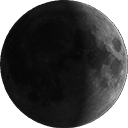This illustration shows the unusual orbit of planet Kepler-413b around a close pair of orange and red dwarf stars.
Image Credit:
NASA, ESA, and A. Feild (STScI)
Imagine living on a planet with seasons so erratic you would hardly know whether to wear Bermuda shorts or a heavy overcoat. That is the situation on a weird, wobbly world found by NASA’s planet-hunting Kepler space telescope.
The planet, designated Kepler-413b, precesses, or wobbles, wildly on its spin axis, much like a child’s top. The tilt of the planet’s spin axis can vary by as much as 30 degrees over 11 years, leading to rapid and erratic changes in seasons. In contrast, Earth’s rotational precession is 23.5 degrees over 26,000 years. Researchers are amazed that this far-off planet is precessing on a human timescale.
Kepler 413-b is located 2,300 light-years away in the constellation Cygnus. It circles a close pair of orange and red dwarf stars every 66 days. The planet’s orbit around the binary stars appears to wobble, too, because the plane of its orbit is tilted 2.5 degrees with respect to the plane of the star pair’s orbit. As seen from Earth, the wobbling orbit moves up and down continuously.
Kepler finds planets by noticing the dimming of a star or stars when a planet transits, or travels in front of them. Normally, planets transit like clockwork. Astronomers using Kepler discovered the wobbling when they found an unusual pattern of transiting for Kepler-413b.
“Looking at the Kepler data over the course of 1,500 days, we saw three transits in the first 180 days — one transit every 66 days — then we had 800 days with no transits at all. After that, we saw five more transits in a row,” said Veselin Kostov, the principal investigator on the observation. Kostov is affiliated with the Space Telescope Science Institute and Johns Hopkins University in Baltimore, Md. The next transit visible from Earth’s point of view is not predicted to occur until 2020. This is because the orbit moves up and down, a result of the wobbling, in such a great degree that it sometimes does not transit the stars as viewed from Earth.


